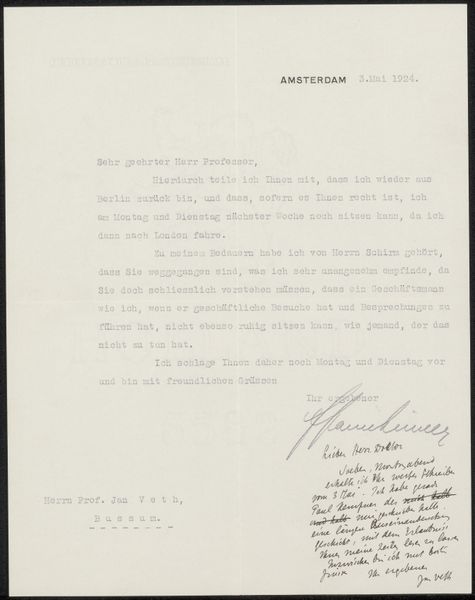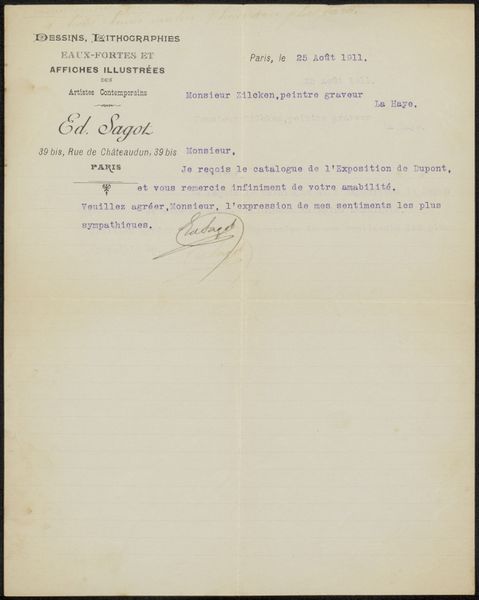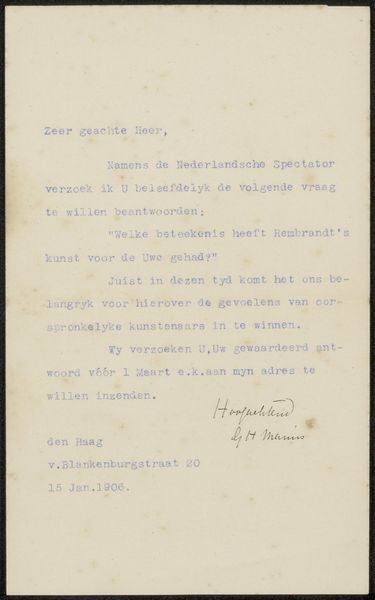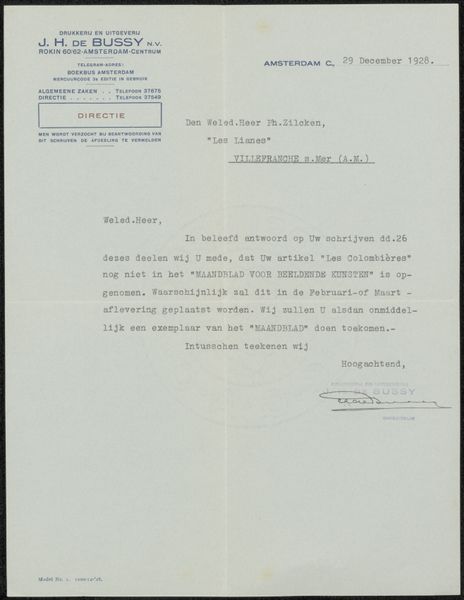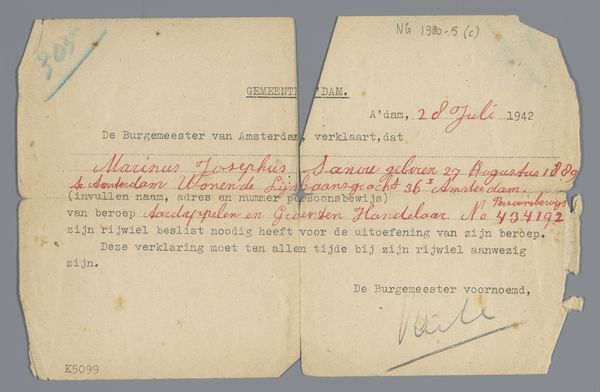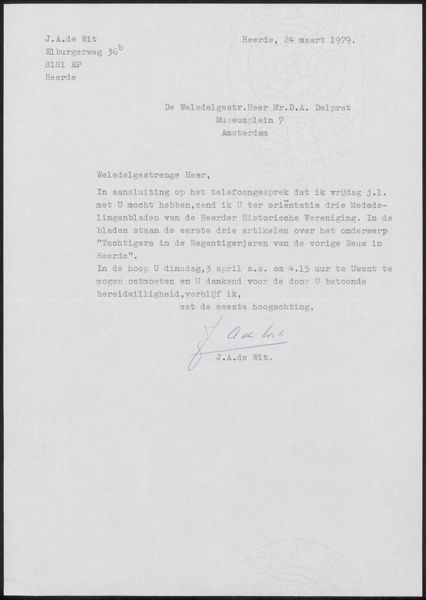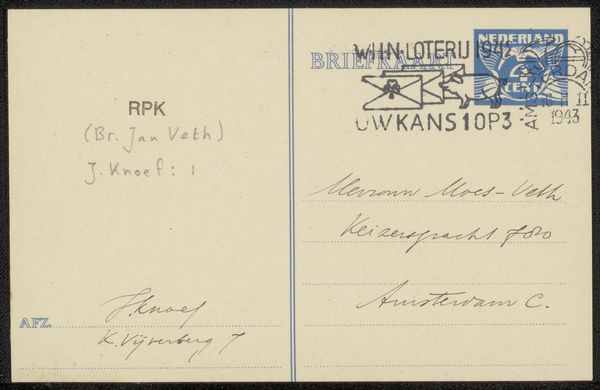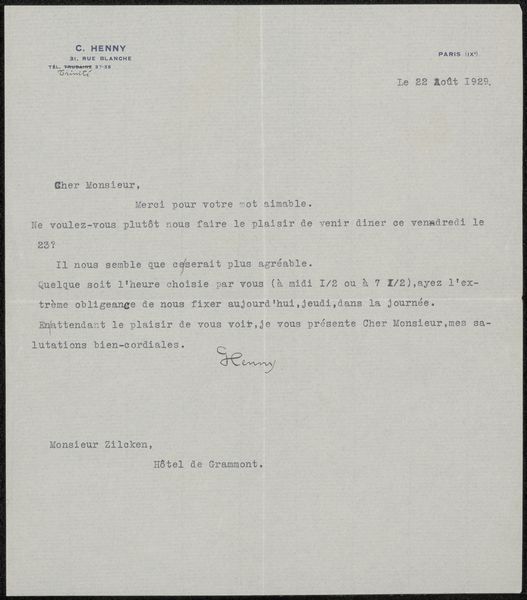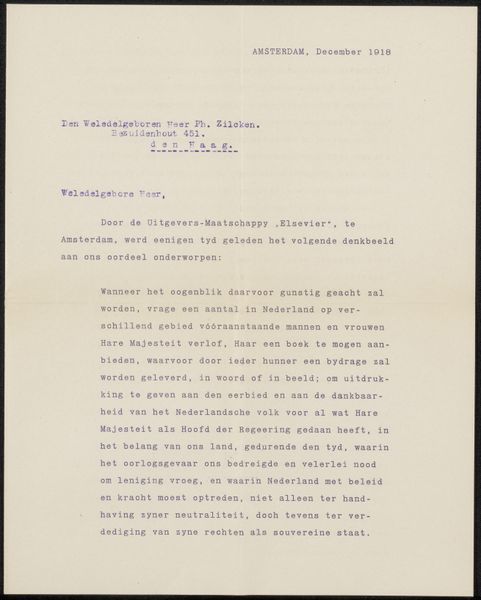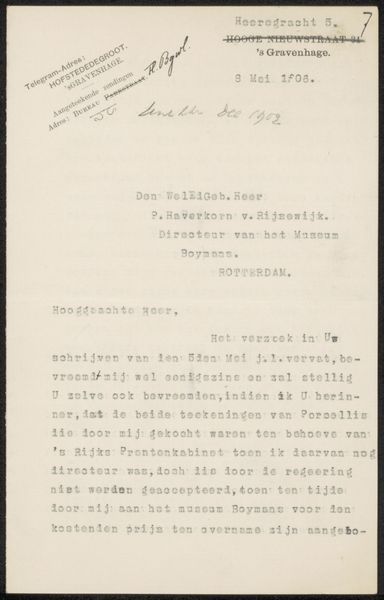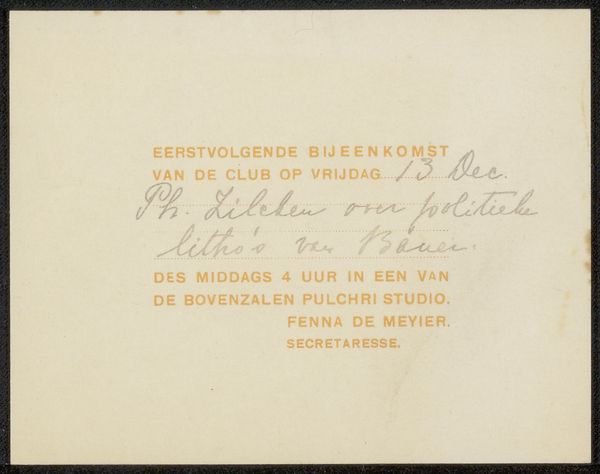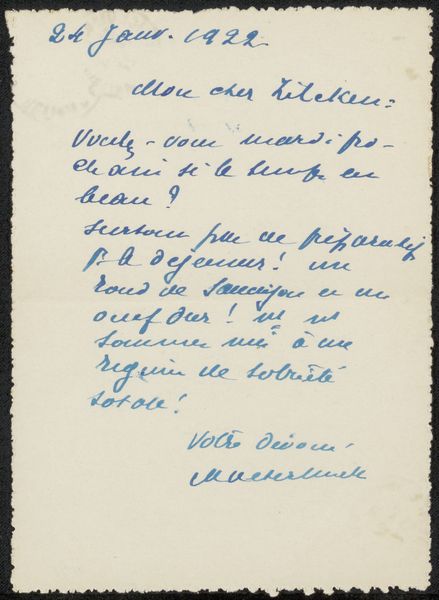
print, paper, ink
#
ink paper printed
# print
#
paper
#
ink
Copyright: Rijks Museum: Open Domain
Curator: Here we have "Brief aan Philip Zilcken," which translates to "Letter to Philip Zilcken," believed to have been produced around 1914. This particular piece is an ink print on paper. Editor: Immediately, what strikes me is the color—or rather, lack thereof. It’s a study in grayscale. The letterhead contrasts sharply with the muted, almost somber, tone of the typed text. The starkness evokes a sense of formality and perhaps a hint of urgency. Curator: Absolutely. Observe the composition itself. The upper portion features the letterhead of Boussod, Valadon & Cie., the art dealers, which lends a certain prestige. Below, the text is neatly arranged, save for the flourish of the signature at the bottom. The deliberate arrangement suggests a carefully crafted message, not just a hasty note. Editor: The script font of the company’s name “Boussod, Valadon & Cie.” really jumps out, positioned above a sans-serif type setting for the address. What symbolism can we read into that juxtaposition? The graceful company font reads like an artistic guarantee from that business. Curator: Good point. Beyond the brand image, note how the text itself embodies that professional touch; observe the structure of each sentence. There's a clear beginning, middle, and end—a formal, structured way of conveying appreciation, in this instance, as it contains expressed gratitude for a contribution from members of the Dutch arts society. It really showcases communication as art in itself. Editor: It’s also worth considering the implications of this letter within the wider scope of art history. Philip Zilcken was, if I recall correctly, a prominent figure in the art world. Curator: Indeed. This piece invites viewers to contemplate communication during times of social change and artistic evolution. What stories can we unpack from a typewritten business document dating back more than 100 years? Editor: From an iconographic perspective, letters are a great way of linking cultural heritage to a single image. This humble, utilitarian document evokes broader, timeless ideas about the transmission of thought and feeling via simple tools like typewriters and penmanship. Curator: It really makes you think about who we honor today by carefully keeping archives. In our contemporary era of emails and ephemeral social media posts, it invites reflection on what might last of the words we type. Editor: Definitely, this piece challenges us to reconsider how everyday acts of communication also become important cultural relics. Curator: Precisely.
Comments
No comments
Be the first to comment and join the conversation on the ultimate creative platform.
